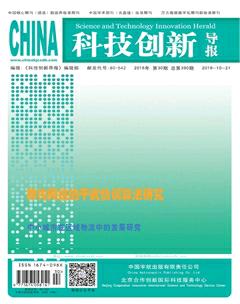微纳结构的载能离子制备、调控及其机理研究年度报告
张苗++王雪林++魏星
摘 要:以粒子束技术为基础的材料制造技术,在材料和半导体器件的发展中起着举足轻重的作用,芯片性能的提高将更多地依赖于粒子束与微纳物质作用及其精确调控技術。目前,离子注入技术最成功的应用领域是半导体工业,其被广泛应用于半导体源\漏、阱掺杂工艺中;另一方面,在微电子、光电子领域的前沿-SOI技术领域,离子注入技术同样获得广泛应用,例如:采用氧离子注入合成SOI材料并利用缺陷离子实现对其绝缘埋层厚度的精确调控,氦-氧多种类离子注入合成SOI纳米结构等。此外,为了推动微电子技术沿摩尔定律继续发展,新型硅基应变材料,如,绝缘体上应变硅和绝缘体上应变锗硅等,由于具有比Si高的多的载流子迁移率以及同传统的Si器件工艺兼容,因而得到研究领域和产业界的高度重视。其材料制备关注的焦点在于利用离子注入引入纳米孔层对异质外延应变材料应力释放,实现应力转移,最终获得以上新型硅基应变材料。总之,对离子注入合成纳米尺度材料的机理进行研究,探索半导体材料离子注入原子的沉淀分解、扩散与成核长大等物理效应与演变机制,以及粒子束对材料应变的形成、应变释放的作用对新型半导体材料合成具有重要的指导意义。高能离子束与光电绝缘体功能材料的相互作用是一个具有很强应用前景的课题。具有一定能量的离子束,轰击光电功能材料表面,辐照离子通过损伤、缺陷机制,诱导特定区域的折射率发生变化,在表面形成光波导结构。根据注入离子的能量、方式的不同,可以分为离子注入、快重离子辐照、聚焦质子束。我们综合利用上述手段在多种晶体材料中晶体上实现波导结构,研究表明离子辐照技术作为一种非平衡的物理方法,注入离子的数量小,而且多数离子都位于注入射程的末端,在波导层中几乎没有掺杂效应,能够保持晶体的原有组分和结构,通过适当的热退火处理,波导层中的色心和点缺陷可以被消除,使得波导层可以保持原有的光学性能,是一种“晶体波导”。通过系统的研究,在多种晶体上制备出性能稳定、导模质量好的光波导,实现波导中光学倍频和激光输出,并通过理论分析对其辐照机理进行了探讨。这对于无源/有源微纳光子器件的研究奠定了实验和理论基础。
关键词:离子束 绝缘体上硅 光波导
Control and Mechanism of Synthesizing Micro-nano Structures by Ion Beam —— Annual Report
Zhang Miao1 Wang Xuelin2 Wei Xing1
(1.Shanghai Institute of Microsystem and Information Technology, Chinese Academy of Sciences; 2.Shandong University)
Abstract: Materials fabrication process based on ion beam technology plays an important role in the development of materials and semiconductor devices. Nowadays, the most successful application of ion implantation technology is in semiconductor industry, and it is widely used in source/ drain and well doping. On the other hand, ion implantation technology is also widely used in the leading edge SOI technology; for example, O+ implantation or O+/He+ co-implantation are used to fabricate SOI nano-structures. Furthermore, for developing the IC technology following the Moores law, strained materials such as strained Si on insulator and strained SiGe on insulator gain attentions from researchers and companies due to its higher carrier mobility than Si and process compatibility with Si technology. The key issue for fabricating these materials is realization of strain relaxation with nano-cavity layer induced by ion implantation. In summary, investigating the mechanism of synthesizing nano-scale materials, exploring the precipitate decomposition, nucleation, growth and evolution mechanisms of implanted ions, and studying the stain relaxation effects play a guiding role in fabricating new semiconductor materials. Interaction of high-energy ion beam with optical functional materials is a highly promising subject. Damages and defects caused by ion irradiation induced refractive index changes in a specific area to form the optical waveguide structure in the surface of optical functional materials. Depending on the energy of the implanted ions and methods, ion irradiation can be divided into ion implantation, fast heavy ion irradiation and focused proton beam. As a non-equilibrium method, very small amount of ions are introduced in the crystals; in addition, most ions distributed at the end of the injection range. The doping effect can be avoided in the waveguide layer, which maintains the original composition and crystal structure. The color center and point defect caused by ion irradiation can be eliminated by introducing proper thermal treatment, which keeps the original optical properties of waveguide layer. Based on several kinds of crystals, we fabricated optical waveguide with stable properties, achieved optical frequency multiplication and waveguide laser output and discussed the irradiation mechanism. These works laid the experimental and theoretical basis of investigation on passive/active micro-nano photonic devices.
Key Words: Ion beam; Silicon on lnsulator; Optical waveguide

